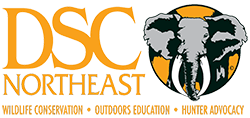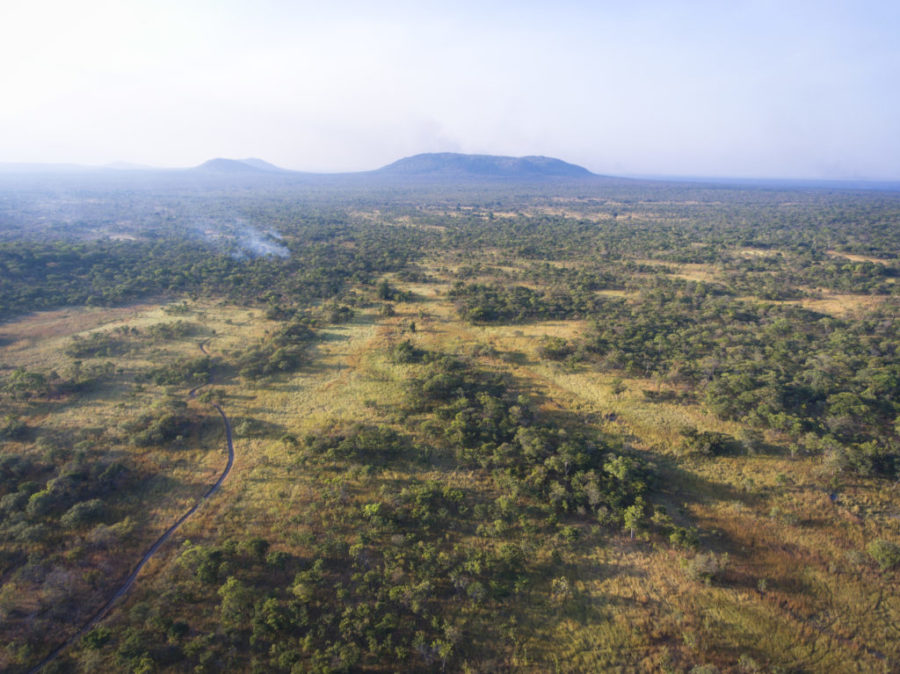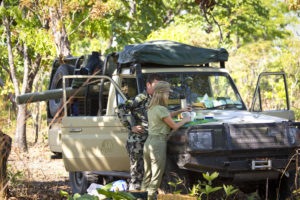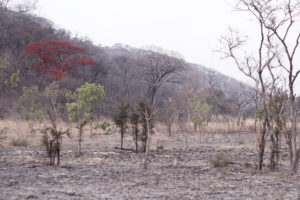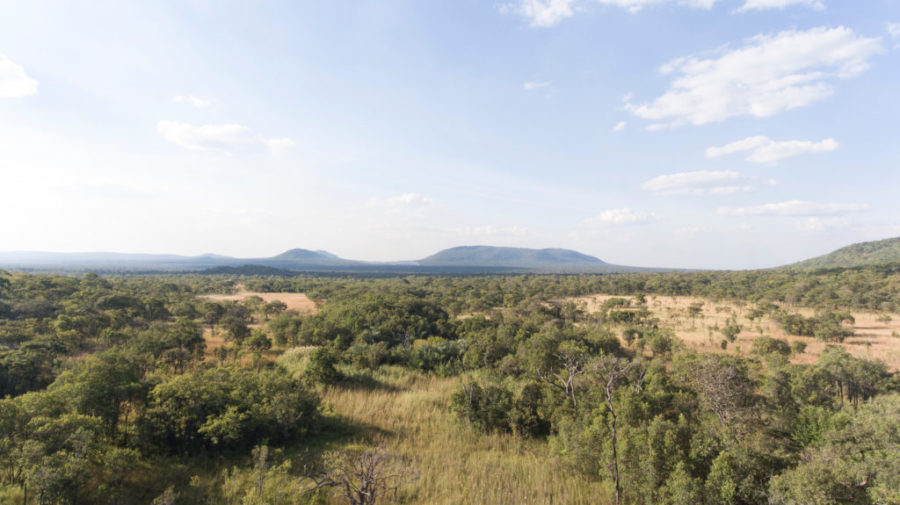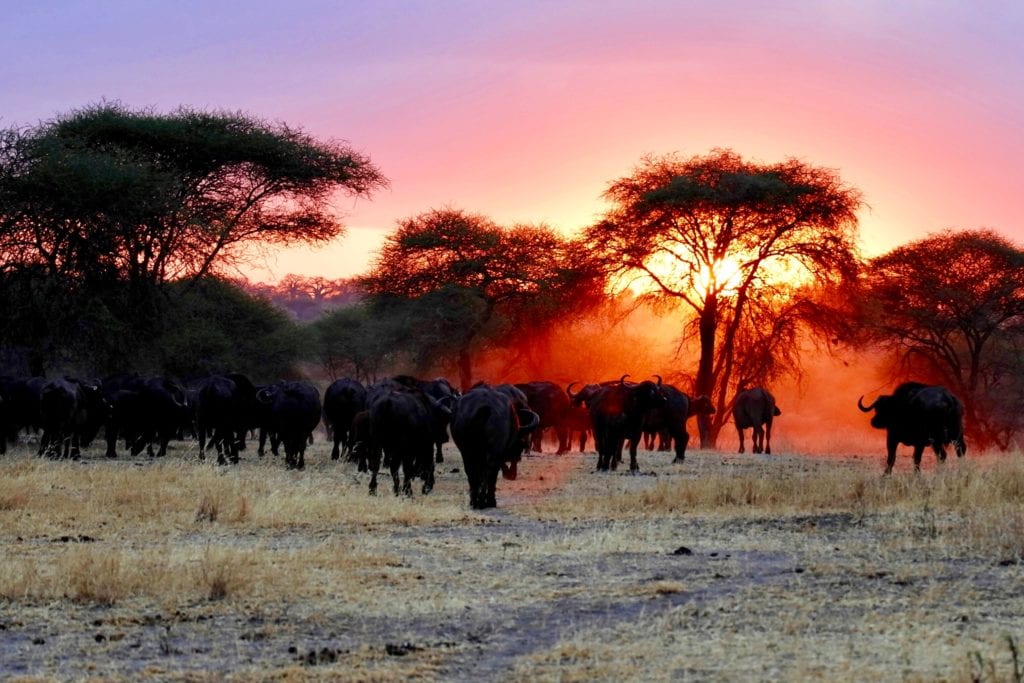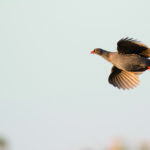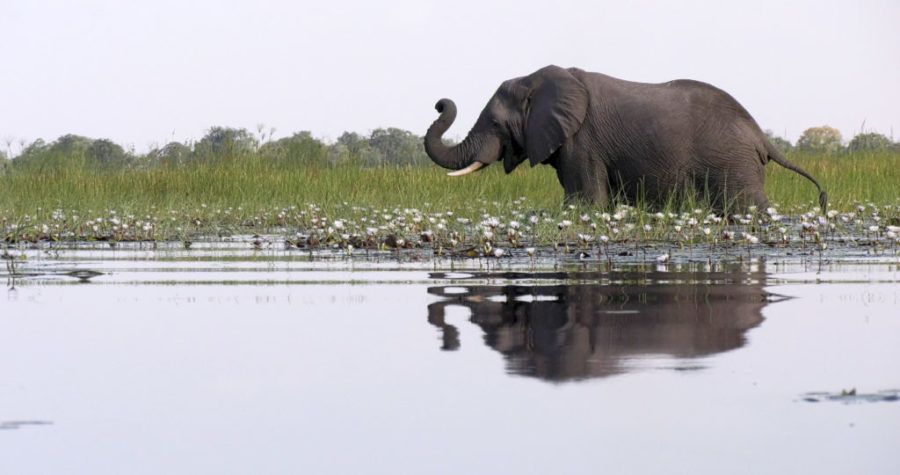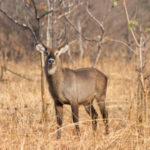
The Oosthuizen family arrived in the Cape Colony from Holland in 1671. The name featured prominently in two of the great events in South African history: the Great Trek of 1836 when the Boers migrated away from the British-controlled Cape and headed east and north-east; and in the second Boer War (1899-1902) when the two independent Boer republics, the Orange Free State and the Transvaal, fought against the British Empire. My direct family line settled in the Colesberg region of the Eastern Cape, later moved south to Uitenhage, and finally settled in the coastal region of Port Elizabeth. My mother was born in South Africa of Welsh and English lineage.
I was born 30 September 1949, in Port Elizabeth. My wife is Velia, and I am stepfather to Sean and Anne.
My hunting career began when I was eight and owned my first pellet gun. My interest in firearms and hunting continued to grow through my early years, especially during holidays away on friends’ farms, hunting dassies (rock rabbits) and meerkats, along with birds and field mice. I shot my first antelope, a grey duiker, at 11 years old with a .22 rimfire. Like my first buffalo 20 years later, that duiker was a milestone.
My dad, a lawyer, loved his annual hunting trips, and my brother and I went along and were part of them. The “voorsit jag” in the Karoo, is when you are posted, often in the freezing cold, waiting for the springbok to be driven towards you by beaters on horseback, an annual event not to be missed. We used a .303 with open sights with 10 rounds in the magazine – if there was lead in the air, there was hope! Later came a scoped .222 Remington and a .270 Winchester, which improved my dad’s game bag dramatically. I had planned a career in agriculture and attended agricultural college, supplementing my income by spearfishing on weekends. Soon after completing my studies, I was on my way to Australia for two years as a cowboy on cattle stations in Queensland and the Northern Territory. The last stage of preparation was when I returned to Rhodesia and did a prolonged stint in their bush war with an FN FAL7.62mm (.308) – an awesome piece of kit.
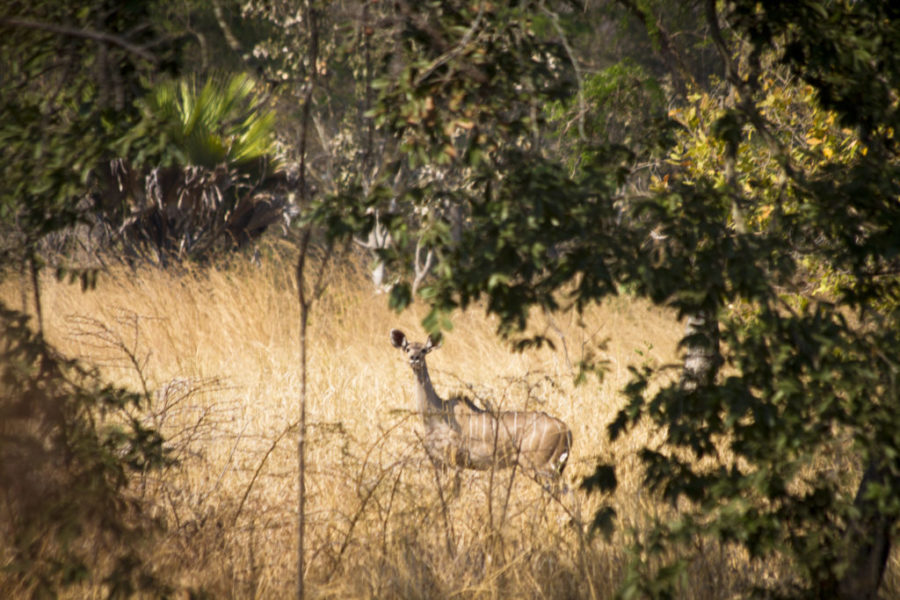
My hunting apprenticeship was under Brian Thring, who was ex-Natal Parks and who, with Dr Ian Player, took a very important part in the game capture aspect in saving white rhino in South Africa. He had a passion for wildlife and set very high standards for himself and those around him. It was a privilege to have had him as my mentor.
In those early years I learned patience. This virtue has proved its worth to me time and time again in my hunting career. I cannot stress it enough to any learner PH out there. In my experience, patience goes hand in hand with the other factors of greatest importance, which are: Communicate with your client – make sure he or she understands what “the plan” is and his part in it; make the first shot count and, of course, firearm safety. Saying sorry is not going to help anybody!
I have hunted in South Africa, Botswana, Zimbabwe, Zambia, Tanzania and Mozambique. They all have geographical features that are unique to them, beautiful and spectacular in their own way. The wildlife may overlap on certain species, but all have species that are indigenous to the particular country. Zambia’s Kafue and black lechwe are good examples.
Unfortunately, the pressure on hunting is growing in Africa for various reasons, including governments closing hunting, which only results in organized poaching taking over, which puts immense pressure on elephant, rhino, and wild lion populations. Most recently, I’m enjoying hunting Mozambique, historically one of the great hunting fields of Africa. Mozambique has been growing in popularity, and hasn’t disappointed either me or my clients in the quality of hunting conditions or the trophies we’ve taken. I’m also still active in Zimbabwe, which offers clients some very good hunting in the Zambezi Valley, the Matetsi blocks bordering the Hwange National Park, and in the private conservancies. South Africa is still a great destination for the first-time hunter, offering a variety of species that occur in ecologically diverse areas, giving the hunter not only different species to hunt but also the opportunity to hunt them under varying conditions. Finally, Tanzania, which although I hunted there extensively in the past, I only hunt now on a very limited basis, due mainly to the time and logistics required to operate effectively in that country.
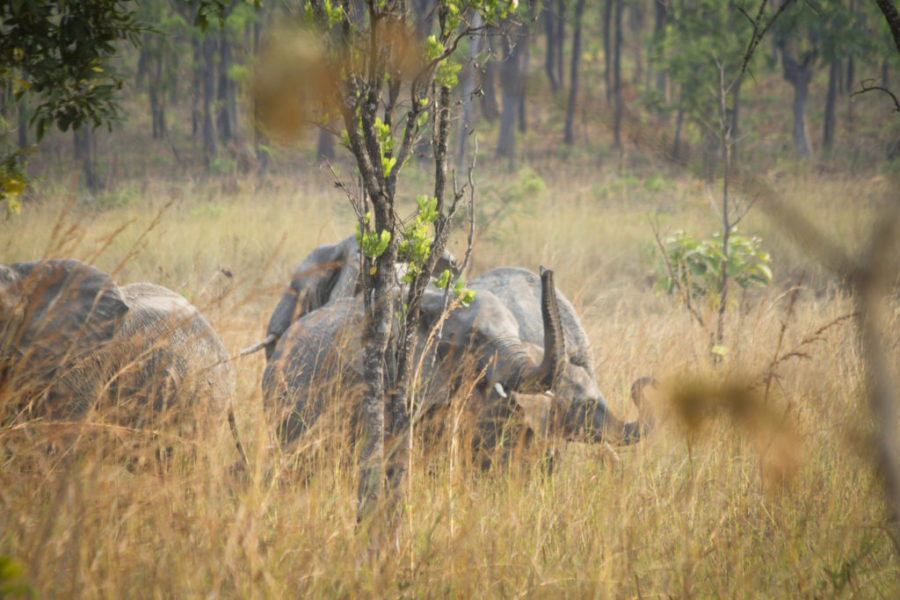
If you could return to any time or place in Africa, where would it be and why?
If I could return to any time or place to hunt in Africa, it would be the Okavango Delta in Botswana. This has to be one of the most beautiful areas that I had the privilege to hunt. The geography is magnificent and the wildlife so diverse, from sitatunga to elephant, as well as herds of red lechwe. An area that is still uninhabited is totally unique in Africa today. Also, the Serengeti in Tanzania. There are few of us left who had the opportunity to hunt this exceptional area. For seven years, I hunted the three hunting blocks – Grumeti, Fort Ikomo and Ikoronga. They were undeniably spectacular, with vast plains full of animals, evening thunderstorms, and the annual wildebeest migration. These were the only blocks through which the migration passed on the journey from Serengeti National Park to the Masai Mara in Kenya. For me, all else falls between.
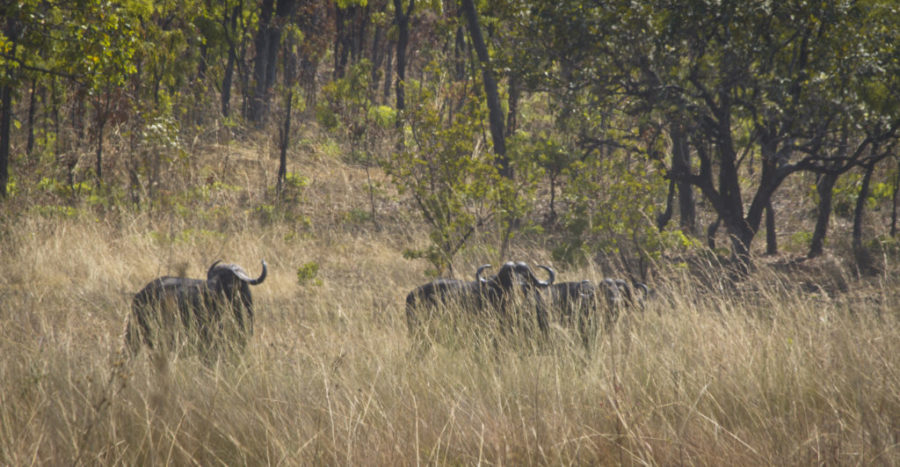
My favourite trophy animal to hunt is the Cape buffalo. It embodies all the aspects that, for the true hunter, make for the thrill of the hunt. There’s that ever-present danger of Africa’s possibly most dangerous species, and the knowledge that if things go wrong, it could be you or him. First, there’s the tracking, an art that never ceases to amaze. Even after countless years in the field with our trackers, we – and our clients – are in awe of their ability. With tracking buffalo, one’s senses are heightened to the sights and sounds of the bush: the skill required to anticipate their – and your – next move; taking into account wind direction, terrain, and quarry with exceptional eyesight, hearing, and sense of smell. Then the stalking, and final approach… crawling, checking the wind constantly, praying for the opportunity for a clean kill.
For me, a “best” trophy will always be a difficult one. I’m not a trophy-record-book person. That’s not to say I have not and do not try for the best quality trophy for each and every client I’ve hunted. I think that as PHs we should all strive for that, provided they’re obtained in an ethical manner. Like other PHs before me, I’ve taken #1 world records, including Nile crocodile and East African impala.
Over the years, I’ve succeeded in taking those targets of 60-inch kudu, 50-inch sable, 10-ft lions and 80-lb. elephant; the exception is buffalo, with a spread of 48 inches and not the magical 50 inches.

In May 2014, my hunter took possibly one of the last truly free-range, untouched-by-man white rhino that will ever be hunted – a great old man with massive bases on both front and back horns, and a total score of 97 inches; no world record, but an exceptional trophy nonetheless. It will be up there with my best trophies because the memory of the hunt and its place in hunting history will be with me forever. We achieved this with exceptional tracking under tough conditions, and took a trophy of this quality before either the poachers or the wildlife department had sighted him. To me, it’s rather like taking a 100-lb elephant that just appears from nowhere and that nobody has seen before. Let us never forget that, although we claim these great trophy achievements for ourselves, it is largely a team effort, for without the tracking skills, instincts, eyesight, and acute senses of our trackers, a great portion of these exceptional trophies would never have been taken.
I’ve used a variety of big calibers over the years, starting with .404 Jeffery in my first years as a PH. I then moved onto a .416 Rigby made by Paul Roberts of Rigby’s London, on a rare Brevex Magnum Mauser action, which I used for many years and loved. I really had no need to change other than, as a lover of big calibers, I wanted to move up the scale to .458, .450 Watts, and .458 Lott. I finally settled on a .505 Gibbs, which is what I’ve been using for the past 20 years. A great caliber that will get a buffalo’s undivided attention when things start to warm up! My rifle is a custom working rifle on a Brno 602 action with a 23” barrel and fiberglass stock, made by Kevin Healy of Bloemfontein Custom Rifles. Nothing fancy, but it does the job. I use Barnes TSX 525-grain bullets, and their solids for elephant and rhino.
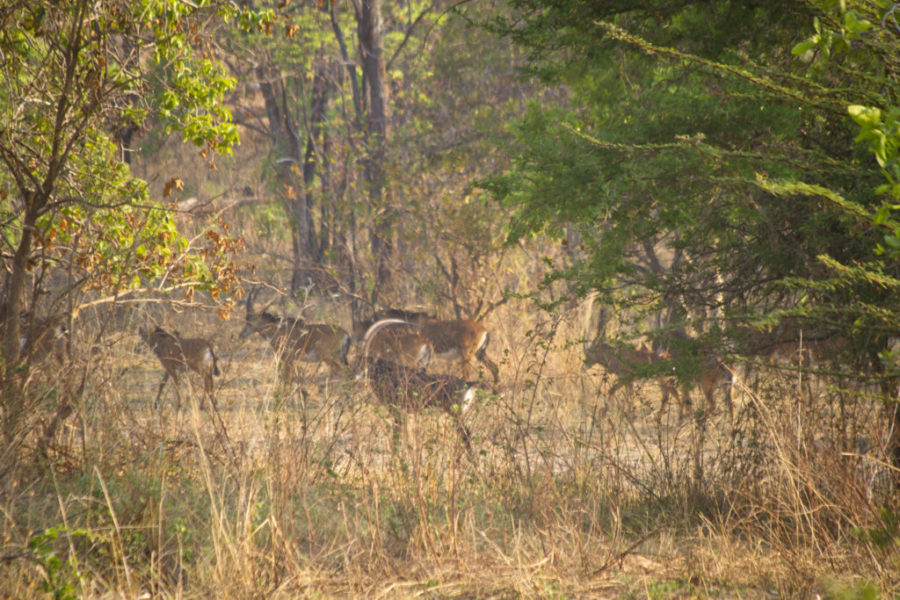
What are your equipment recommendations for the first-time hunter to Africa?
For a first-time hunter to Africa, I would recommend the .300 calibers for plains game as a very safe bet. On my shortlist would be: .30-06, .300 Win.Mag., and .300 H&H. For dangerous game, unless very comfortable with recoil, I would have to say that the .375 H&H is the caliber of choice. It has medium recoil, which enables good bullet placement – the key issue when hunting these animals. In the larger .400 calibers, either the Rigby or Remington .416. This I class as a hard-hitting .375 with all the attributes of the .375, but with a considerably harder punch, allowing greater margin for error. Ammo, in all cases, should be safari grade with premium bullets. In the overall cost of a safari, skimping on ammunition quality can prove very short sighted, costly and, in some cases, disastrous. Other gear of prime importance: a good camera; quality binoculars of 8x or 10x power (Leica, Zeiss, Swarovski); and rifle scopes that are proven: Leupold, Swarovski, Zeiss, Schmidt & Bender.
I did have a close brush with death, first prize being for when I was on the receiving end of an enraged buffalo bull. Wounded by a client, and shot by me in full charge with a .458 Lott and 500-grain solid at three metres just above his right eye, he did not even check stride. Trampled, pummelled, gored, and tossed eight feet into the air, is as close as it gets without the choir! My late great friend, PH and tracker of skill, Kontela Banda, finally shot him off on top of me. I know that those of us who have “been there” are sure of one thing. An infuriated buffalo does not need a practice run, or an apprenticeship. He is not confused about what he is doing. He has a plan, and that is that as long as he has oxygen in his brain, he will keep at it until one – or both of you – is dead. In retrospect, I should have used a soft or TSX bullet. I have no doubt that had this been the case, the shock at that range would either have turned him or knocked him down.
The hunting industry has certainly changed over the last 30+ years. When I started in this business, we would write letters to clients or potential clients. It could take up to two months to get a response. This was followed by telex, which speeded up the process significantly. The advent of the fax was an unsung revolution. Suddenly, a response could arrive within 24 hours, with the PH being able to supply the client, at his bidding, with all needed details.
Now, with the IT revolution, e-mails, Internet, Google, and social media, information is instantaneous. HF radios have given way to satellite phones, laptops and satellite modems, making communication a daily occurrence, no matter where you are in the world. “Roger! Do you copy? Do you read me? Over and out,” are all part of communication history, and global coverage of cell phones from any coordinate is imminent. All this, to my mind, has changed the face of the outfitter/client relationship by an infinite margin.
In addition, with books by Peter Capstick, the movie Out of Africa, and especially the advent of the hunting video in the 1990s, suddenly the romance and excitement of an African safari was in the living rooms of thousands of would-be adventure seekers. In the field, as Africa’s free-range hunting areas continue to shrink, the explosion of game-ranch hunting in South Africa, Namibia – and, on a more limited scale, Zimbabwe – offers hunters an ever-greater variety of species. These ranches will probably be responsible for the survival of numerous species and will, in all likelihood, due to human pressure, poaching and the green movement, ultimately be the destinations of choice for future hunters. Sad, but true.
Unfortunately, Africa’s governments do not appear to view their national parks and wildlife departments as a priority. This has resulted in a lack of funds, with the ultimate management of these heritage areas and Game Controlled hunting areas sliding out of their control and into the hands of poachers. As a result, prime wilderness hunting areas continue to diminish at an alarming rate.
Clients, too, have changed. Time, and not necessarily money, has become the primary determining factor for the length of a safari. And, unfortunately, a “rack and stack” culture has crept into the industry, particularly where game-ranch hunts are concerned.
To be a successful PH, hunting ethics is a good point of departure; there is no substitute for this. Thereafter, hunting ability, bush craft, sound knowledge of firearms, mechanical knowledge, communication skills, and the ability to discuss a range of topics over and above cars, guns and girls!
Outfitters must have two very important strings to their bow: Rapid response to the client’s communications, and systematic planning of the safari from pickup to drop off. No grey areas.
The red flag is when you hear, “It should be OK…” Stand by! As sure as God made little apples, there’s a problem coming down the pipe. A good rule of thumb for all – the Six Ps: Prior Planning Prevents Piss-Poor Performance.
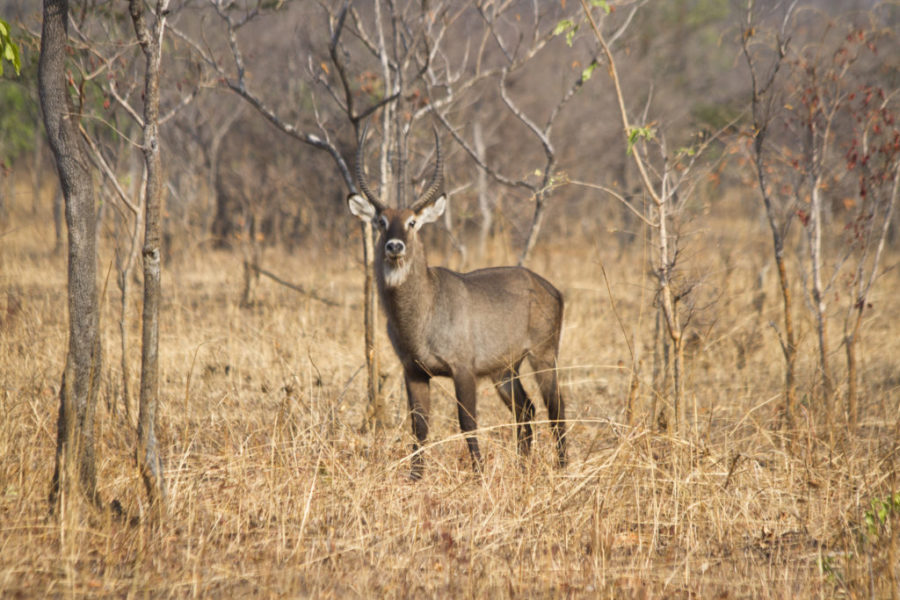
A good safari client needs to be laid back, appreciate that there are no guarantees. Everybody, from trackers to PHs, will do their best for you. But wilderness hunting is not a given, and clients should realize that. There may be disappointments, but that is not because of the lack of effort from any professionally run outfit or skilled PH. Those clients who are ultra-competitive and put pressure on themselves and their PH will spoil the safari for themselves and everyone around them – including trackers, skinners and bottle washers. Finally, a great attribute for any client is an interest in not only killing trophy animals but in the whole African safari experience – the area’s geography, local history, birds, plants, insects…
Vital advice for the would-be hunter: Prepare for your safari. Get fit. Fitness is the key for total enjoyment of the hunt. I cannot count the number of times clients have said, “I wish I’d gotten myself into better shape.”
And practice with rifle and the ammunition you are going to use. Use shooting sticks and get used to shooting off them. If hunting dangerous game for the first time, a shooting school that offers courses will only enhance the whole hunting experience.
With regard to the long-term conservation of Africa’s wildlife, we are fighting a war on two fronts: the green movement on one, and the poachers on the other. They both have bigger guns than us.
The greens have the backing and US$ of anti-hunters and millions of misinformed public. The poachers have the backing of the Asian-driven market for illegally obtained wildlife. The poachers are growing in numbers and are becoming better and better equipped. All we have is the argument of sound logic, which is that by giving wildlife value through sustainable hunting adds to its longevity, which also benefits the locals who live alongside wildlife. The fact that safari companies are a presence in the field (and generate benefits for locals), that help monitor poaching, that we are the first line of defense against them – is, sadly, all we have to offer. Nothing more.
Game departments, in the main, are toothless, lack incentive, and find “other ways” to spend the funds allocated to them. So we can count on little or no support from them. The “Big Stick” approach is no longer seen as a way to deter would-be poachers; political initiatives are far more important.

Safari clients are already limited as to what they can afford to pay for a safari, much less donate additional funds for anti-poaching, which ends up being a bottomless pit. Unless there is true unity between government, their game departments, and the hunting and photographic companies in order to present a united front, and together go about raising funds globally in a business-like manner to pay for anti-poaching, I feel this war will ultimately be lost. Poaching is now such big business that listing it on the Stock Exchange should probably be considered!
Two examples demonstrate that, with enough funds, there can be very positive results: The Serengeti blocks, now under private stewardship of a concerned American businessman who has a proper anti-poaching program and the funds to back it, has brought that area back to the days of yore in only 12 years. The second is the Timbavati/Greater Kruger area, to which I returned to hunt for the first time in 2013 after 28 years. The effort that has been invested into many years of proper management and an effective anti-poaching program is testimony to what can be achieved. It was an absolute joy to see herds of buffalo, including bull herds of 25 with many bulls aged 10 years or more.
I’m taking this opportunity to thank my wife Velia for her never-ending support through all these years. From the moment she fell for a learner PH, when she was a very well-respected businesswoman in Johannesburg, Velia made over 70 weekend trips to Hluhluwe in Zululand to prove her commitment, and our engagement, between the business professional and the PH, made the front page of the Sunday Times. And it has never changed between us. During all these years, no matter what time of day or night, if I call on the HF radio or satellite phone, whether from Tanzania, Mozambique, Zimbabwe, Botswana or Zambia, she’s been there to answer, a cheerful voice, alone at home. More I could not ask.
This reminds me of a radio call I made to Velia at home from base camp in Rungwa, Tanzania, when there were fewer hunting days left than priority trophies – lion, sable and roan – to be bagged in two days. We were close to the point of “the fat lady walking onto the stage!”
On the evening of the third-to-last day, we hung our two last baits in likely spots, but with no positive sign to raise our hopes. We left camp at first light and headed to the bait sites. Ten minutes out from camp, a lone roan bull ran across the road in front of us and stopped in the miombo woodland. We bailed off the Cruiser, I put up the shooting sticks, and we had our roan. Then, 300 metres down the road, my tracker Makanga went crazy – 50 metres to our right stood a magnificent sable bull. Again we bailed. Bang! 46-inch sable. While we took pictures, the truck continued to camp with the roan. When they returned, we took the sable back as well. It was now 08h00.
We then headed off to check our baits. As we approached the waterhole where we’d hung the first bait, Makanga went into orbit. Standing under the bait tree was a truly magnificent lion. It was 09h00… We decided to play golf that afternoon!
That evening, when Velia asked me how the safari was going, I excitedly described our once-in-a lifetime morning. Her response from home base was: “Why would you want to do all that in one day?”
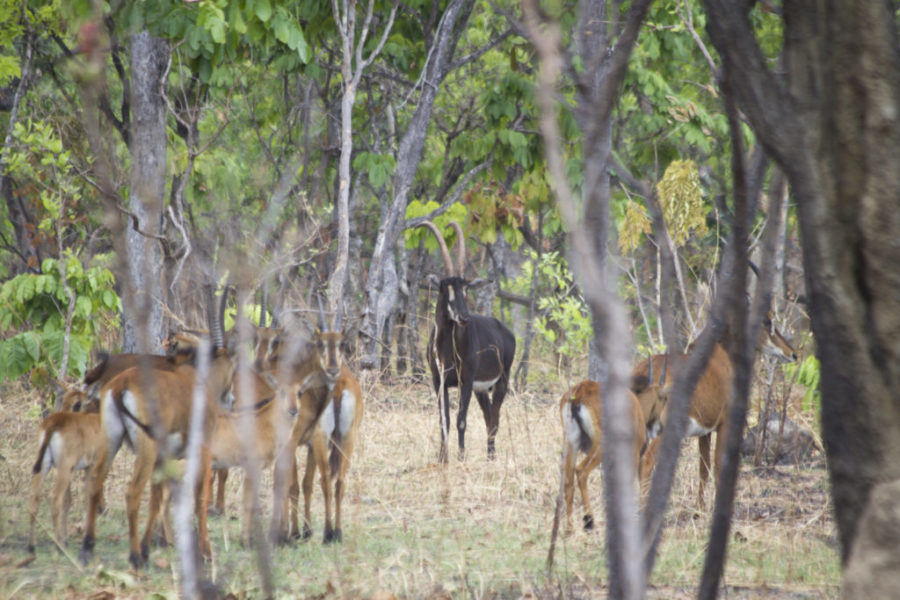
And her advice to future wives of PHs is simply, follow your heart.
I do not have children, but if I did, I would say to them: Before you buy that 4×4 and heavy-calibre rifle, get a diploma, degree, or trade. Start another business that will give you a constant source of revenue and, only then, if you still have ‘the bug’, look to professional hunting as a secondary revenue stream.
If you look at careers on a global scale, and ask yourself which one you might select, professional hunting does not fall under the same banner as accountants, doctors, or lawyers. It probably isn’t even mentioned. The number of us that have gone down this path for 30 years or more is miniscule.
To have been one of those few is a privilege I will never regret. This has to be one of the greatest professions on earth! I could not be more grateful. To be lucky enough to wake up in the wilderness day after day, with a plan, but knowing that that plan might change within five minutes of driving out of camp. A lifestyle with nothing regimented or routine. A life of adventure, excitement, and ever-present danger. This is what millions must dream about. If it all had to end tomorrow, I would have lived my life to its fullest. As we say,” We may never make a lot of money, but we have had a lot of fun.”
The views expressed by the editors, authors or users of this linked article are expressly theirs, and do not necessarily reflect the policies or opinions of Dallas Safari Club, its employees, members or assigns. Any concerns about a site user’s post should be addressed appropriately to that person. Any concerns about an advertiser, a user or any content on this site should be addressed to social@dscnortheast.org.
